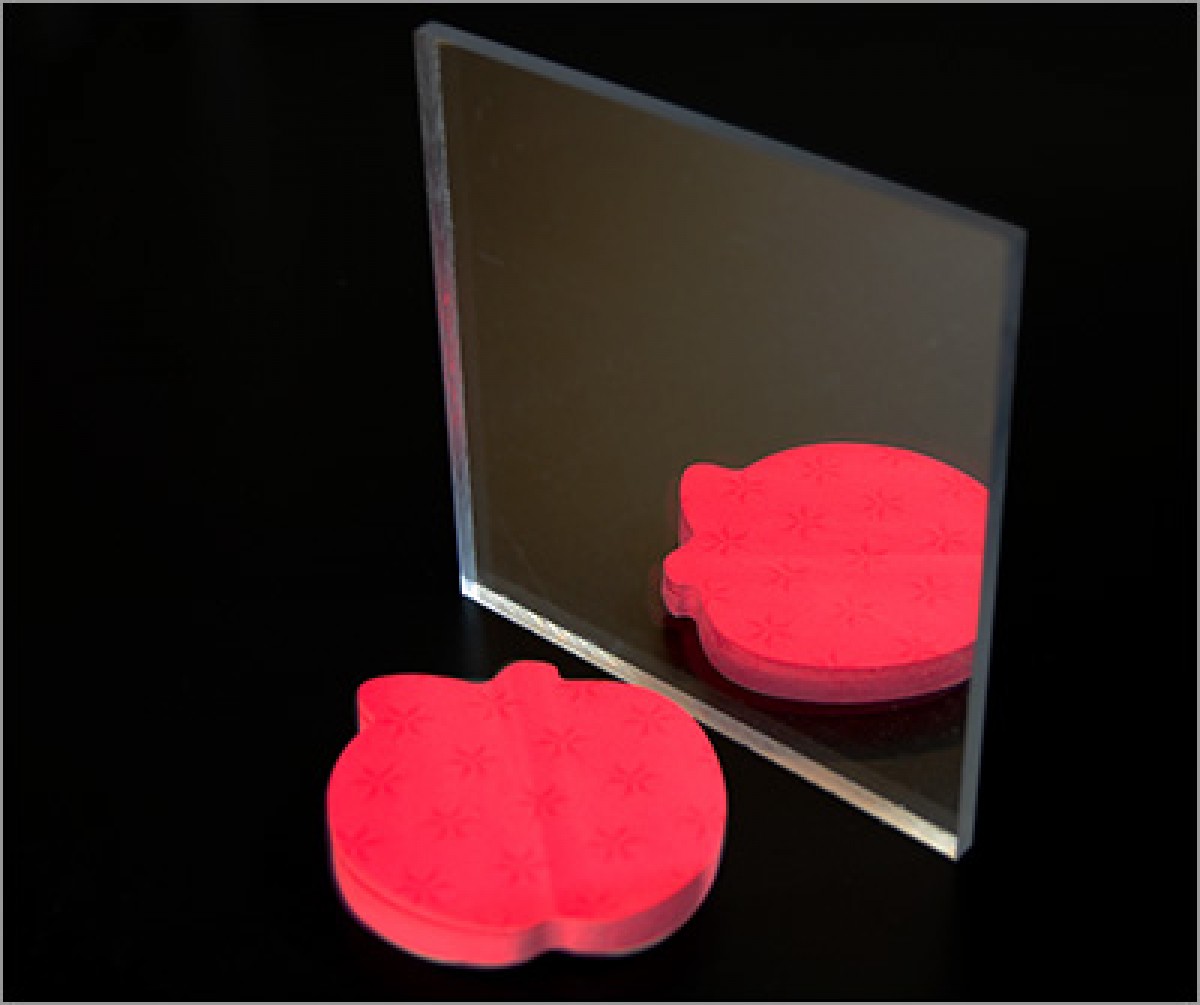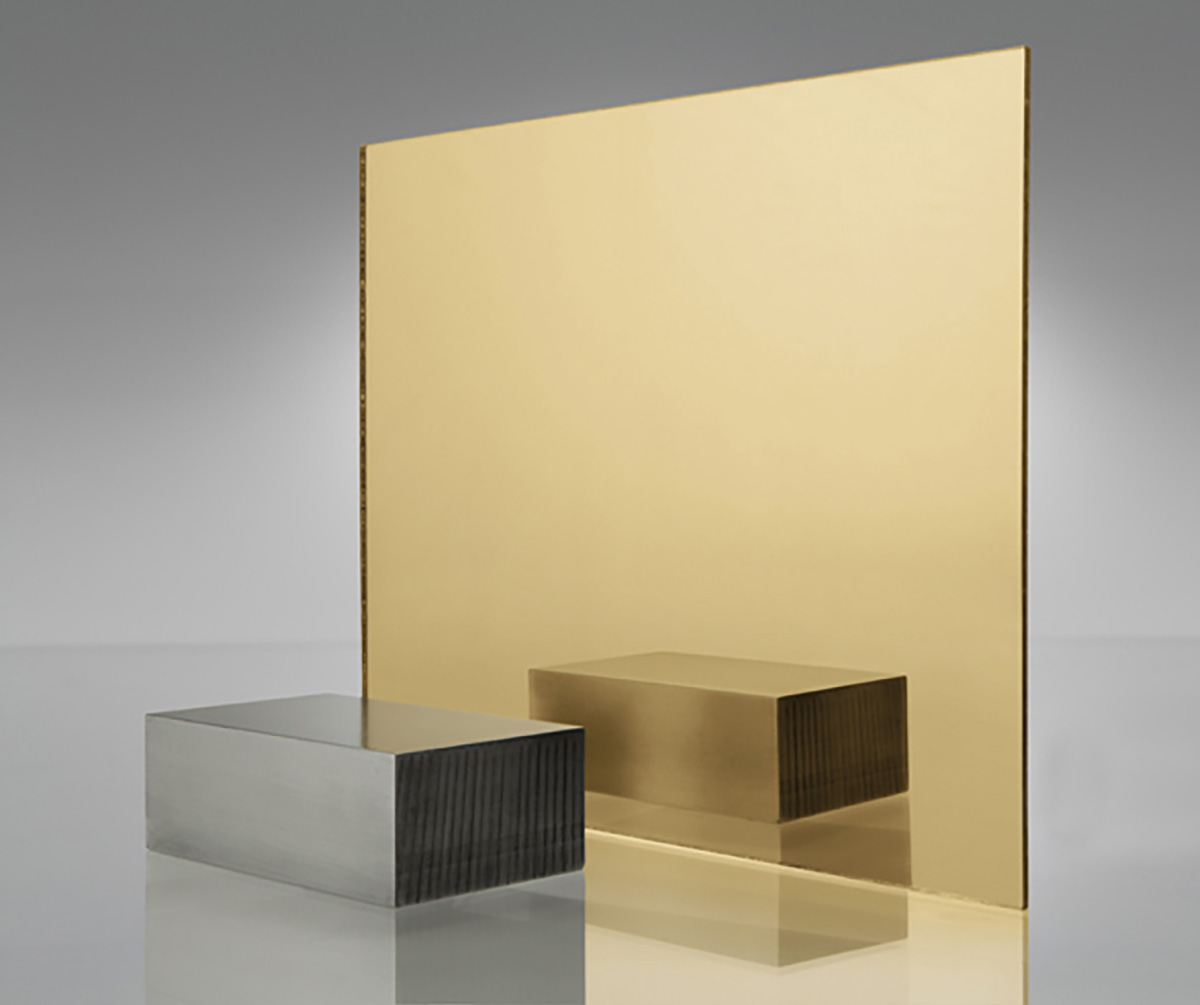Acrylic Mirror Sheets
What is Mirror Acrylic?
An acrylic mirror sheet is a safe, lightweight alternative to a glass mirror. Mirrored acrylic is only half the weight of glass yet is many times more resistant to breakage and impact. It isn't as rigid as glass and can be easily cut or shaped to fit a frame and any particular needs. However, because of this flexibility, acrylic mirrors can easily be distorted if not mounted in a rigid frame or flat backing.
Wherever glass may crack or shatter, acrylic is an excellent alternative. At TAP Plastics, we fully support the DIY concept at every step as well as industry professionals that demand nothing but the best materials. We happily provide mirror acrylic sheets that are perfect for use in decorative displays as well as craft projects.
Both clear and colored mirror sheet solutions are available for everything from RV mirrors to POP displays or high tech laser cut letters for signs. Use these laser cuttable sheets as-is or modify them based on project needs. Whether cut, drilled, or shaped, we know you won’t be disappointed when choosing an acrylic mirror for your next project.
No matter what kind of project awaits you, we have all your needs covered in our acrylic mirror sheet collection. Each crystal-clear sheet can be customized by thickness, width and length. Plus, we offer routed edges, rounded edges, radius corners and holes for an additional cost. If you stop by the nearest TAP Plastics location, we can have your mirror sheeting order ready in five minutes! Call our experts at 888-827-7330 or email info@tapplastics.com if you need more information.
Mirrored Acrylic Uses and Applications
Acrylic is the preferred choice of hobbyists and professionals for applications in which glass is susceptible to cracking or shattering. Use as you would use a glass mirror in any application! Mirror sheets can be used for boats, retail displays, stores, dance studios, dressing rooms and many other locations.
How to Install Acrylic Mirror Sheets
Installation Guide (PDF)TAP Video: How to Install an Acrylic Mirror

Acrylic mirror has many advantages over glass. It is half the weight and 10 times more break-resistant. It can be easily cut or shaped to fit a frame. In appearance, an acrylic mirror is indistinguishable from glass.
However, plexiglass mirrored sheeting must be mounted properly. Since the mirrored acrylic is somewhat flexible, it can in time conform to the irregularities of the supporting surface. A non-smooth, non-planar surface will cause localized bending of the mirrored sheet, which distorts the reflected image. Visual distortion is also a function of viewing distance and material thickness. Thicker acrylic is less flexible and therefore maintains better optical integrity. Correct installation and sufficient material thickness can reduce visual distortion but may not fully eliminate it.
For best results, mirrored sheets should be mounted to a smooth, rigid, sturdy flat backing such as 5/8-inch or 3/4-inch MDF (medium-density fiberboard) or an equally flat surface. The surface should be clean, dry and free of any flaking or powdery paint. Ceiling and overhead installations are not recommended unless your mirrored acrylic is mounted in edge-engaging frames such as T-bar suspended ceiling frames or mechanical mounting.
Mirrored acrylic has a reflective film applied to the backside of the acrylic. Paint is then applied to protect the reflective surface. Use only adhesives designed for acrylic mirrors, such as Gunther's Mirror Mastic. Adhesives with solvents of 5% or more are not recommended. Since numerous adhesives, cements and mastics are available, they should be tested on expendable pieces prior to application. All tests should be applied at least 72 hours in advance to determine compatibility to the back coat, the reflective coating and the acrylic itself.
Apply adhesive in vertical beads 5-6 inches apart starting about three inches from the edge. Mount the mirror within 10 minutes of applying the adhesive. Support the mirror mechanically (mirror clips, etc.) until the adhesive dries. Do not apply adhesive if the temperature is below 60 degrees Fahrenheit. Read and follow adhesive instructions carefully. Clean the mirror with a microfiber cloth and soapy water.

